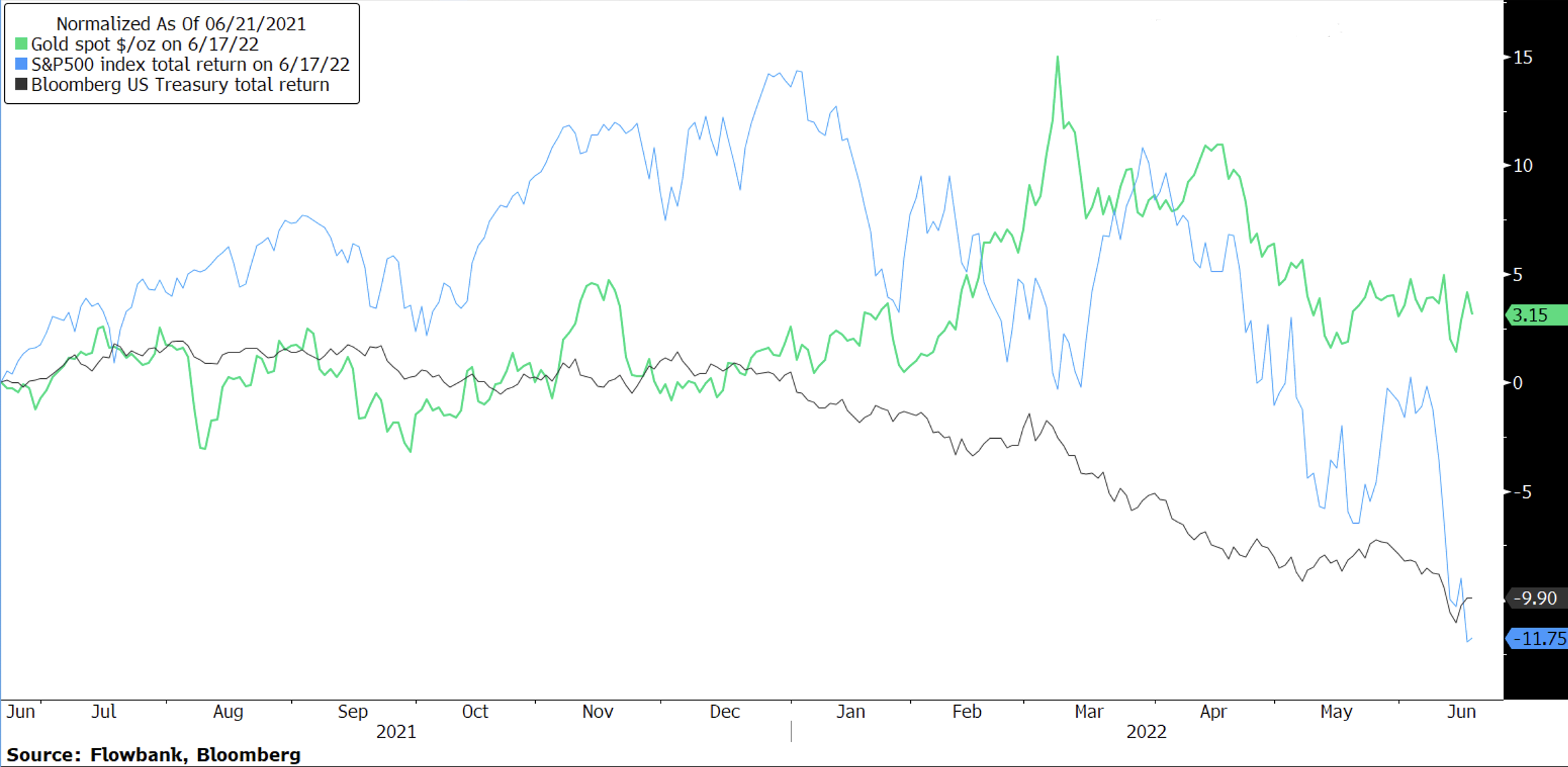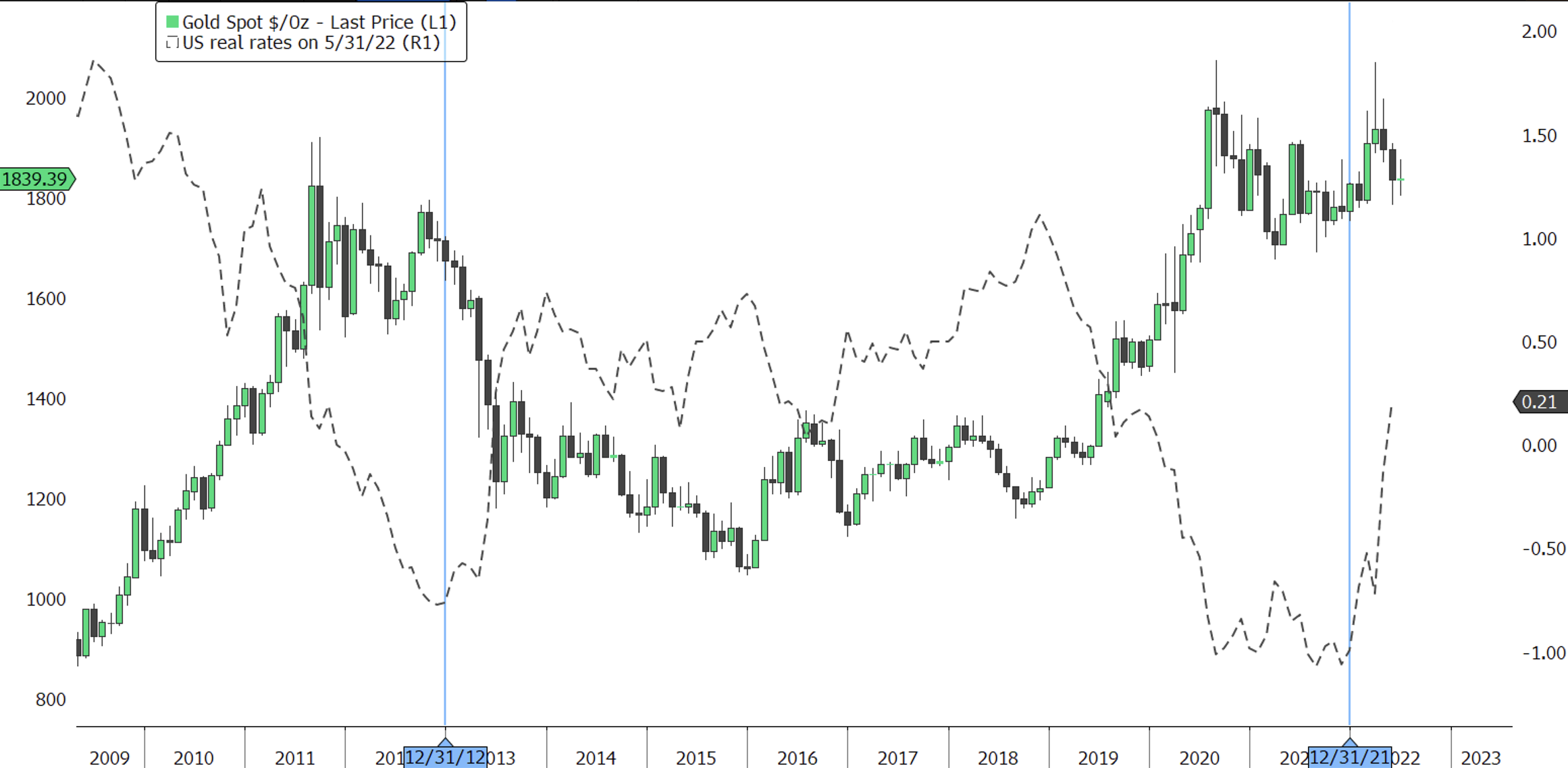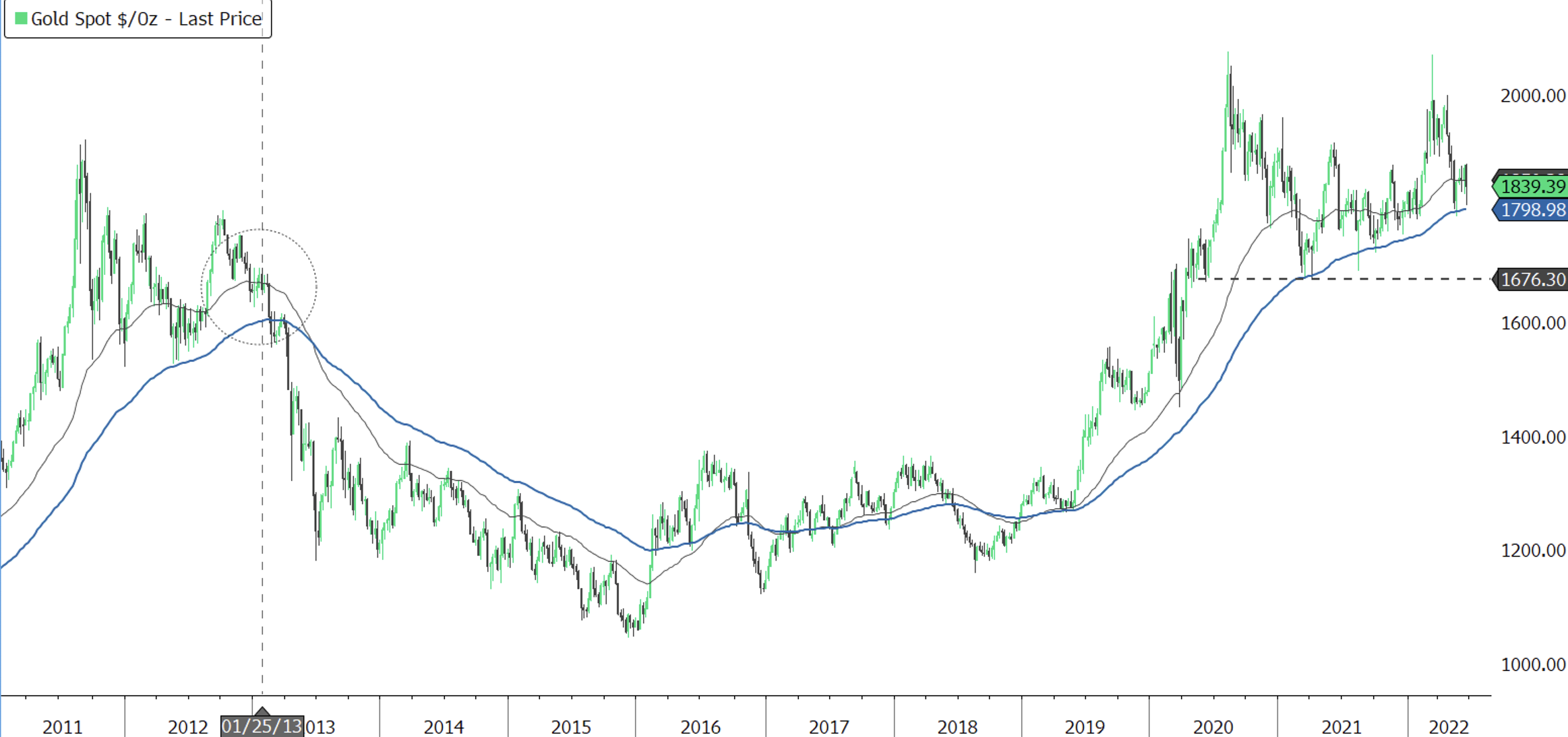Gold prices started the year on a strong foot, along with oil prices outperforming all other asset classes in a turbulent market environment. However, six months later, there has been some mixed price action lately, if not some real weakness on the back of positive real yields in the US. Is the gold bull market over, or is there still some room for further gains?
Key takeaways: a deterioration in risk sentiment due to recession fears and geopolitical uncertainties along with record inflation numbers fueled demand for haven assets such as gold in the recent past. Nevertheless, looking ahead the yellow metal is facing major headwinds: an emboldened US central bank that is willing to raise rates as much as necessary to prevent inflation from getting out of hand and an extreme level of consumer inflation expectations, which usually implies much of the inflation move is already priced in, leaving gold investors with considerable downside risks.
What is driving gold in 2022?
This year, Investors that read our previous paper on gold and decided to allocate a percentage of their portfolio to the yellow metal, are happy to see the diversification benefits of the bullion as it is the only asset besides oil that is still in the green so far this year and significantly outperforming stocks and bonds.

Lately, markets have been going through some material turbulence as revisions in global growth estimates due to a surge in energy prices and geopolitical uncertainties, along with very hawkish central banks have increased the risk of stagflation across the world, a combination that is significantly weighing on risky assets and consequently increasing demand for haven assets.
Last week, the Federal Reserve raised rates by 75 basis points, the biggest increase since 1994, and central banks in Europe (ECB, BoE, SNB) lifted borrowing costs for the first time since 2011, in an attempt to tame inflation. Real yields in the US hit 0.88% last week at one point, the highest since January 2019 and real yields in Germany jumped to -0.46%, a level last seen in 2015.
In terms of real yields, gold doesn’t bode well with positive real yields, as it increases the opportunity cost for investors to hold on to a non-yielding asset like gold. Historically, gold prices and real yield have always demonstrated an opposite relationship – when real rates turn positive, investors prefer converting their gold exposure to positive yielding assets with almost no risk of default (Treasuries) and vice versa.

The last time, the Fed decided to pursue a tighter policy (QE and rate hikes) was back in early 2013. Unsurprisingly, that period also coincided with the beginning of a bear market for gold, where the bullion lost nearly 40% over the next 3 years. Strangely, this time around despite the surge in real rates, gold appears to hold steady. Reason? Current pricing highlights the risk that Fed may tilt the economy into a recession as it fights inflation.
Forecasting inflation is extremely difficult, but we want to highlight that we expect inflation to surprise to the downside from here on. The surge in food prices early in 2021 and now a rapid rise in service prices are consequences of Covid disruptions that are starting to improve as the market is adjusting itself to the new environment. And for those yelling “what about oil prices?” we believe while the likelihood for oil prices to remain at these levels is high, we struggle to see it double from here over the next one or two years. In addition, inflation expectations are at multi-cycle highs. The last report from the University of Michigan showed that US consumer inflation expectation (for the next 12 months) rose to 5.4%, the highest since the 1980s. Yet gold is down 1% since that day (10th June), proving that much of current inflation expectations are already baked in the price.
Is this another 2013?
Gold has been on a downward trend since early March, the week when US real rates bottomed, showing an impressive similitude to the 2012-2013 periods. Traders should be on alert for any evidence of Gold pulling below the USD1’780-1’790 levels, which could open the door for more downside risk (USD1’670 next support). 
Looking ahead
A strong dollar on the back of positive real yields in the US is likely to give the yellow metal some hard time in the near future. Yet as uncertainty remains around Fed's tightening policy, gold could outperform other assets on a relative basis thanks to its historical value and stability during uncertain economic times. Nonetheless, investors should beware of deteriorating technicals which sometimes could tell in advance when a trend is reversing.




